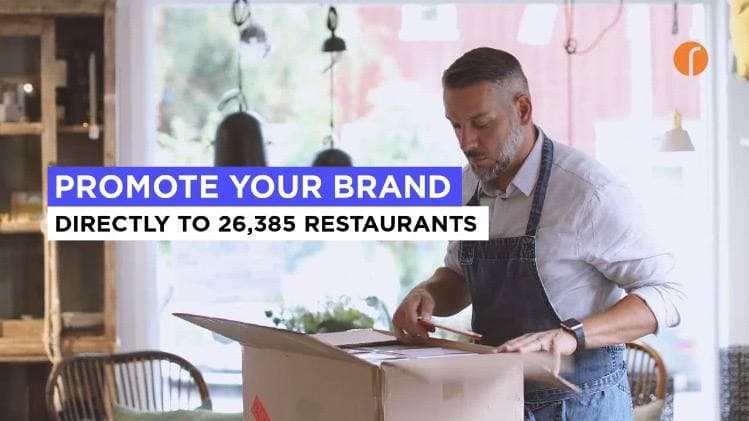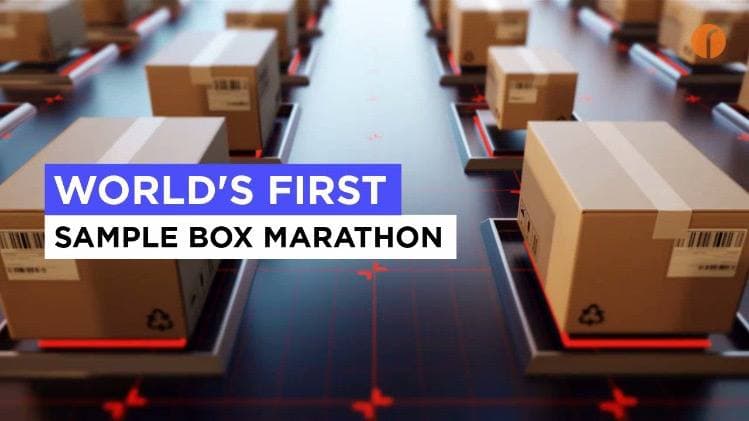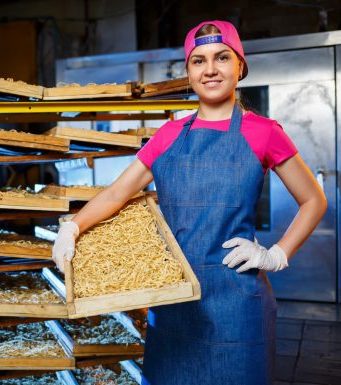
Restaurant suppliers must spend on advertising and promotions to make buyers aware of their products. Manufacturing high-quality food and products is not enough to ensure business growth and higher profits.
Imagine: there are two businesses. One of them makes a great product but does not advertise. The other company sells average-quality products while investing significantly in advertising.
The second manufacturer will sell more due to buyers’ awareness.
Do you know what promotional methods are available today to food manufacturers?
In this article, we cover them in more detail.
What are the Benefits of Product Promotion?
Product promotion is a traditional growth lever regulating the economy and all its marketplaces. Food manufacturers that implement it correctly can successfully sell products and sell them fast.
Additional benefits of promotion include:
- achieving a quick return on working capital,
- establishing business relationships with end-buyers,
- creating or increasing demand for the goods.
Food manufacturers who realize these benefits can significantly expand production and increase the volume of goods sold.
Why Is Product Promotion Needed?
The company’s brand and products should be known to the broad spectrum of buyers and influencers, not just to a few experts who have access to private catalogs and confidentially shared data.
The main promotional tasks for a brand include informing, persuading, and reminding potential buyers about products, services, images, ideas, and social activities.
Every food manufacturer needs access to the market and uses multiple ways of promoting the brand and the products: through stores, distributors, mass media, or online.
What Are the Goals of Product Promotion?
The Product Promotion strategy aims at stimulating buyers to purchase a product or service from a particular manufacturer and remain a customer, repeating purchases when needed.
Food manufacturers engage in the promotion of their brand and goods to achieve these important goals:
- Form buyers’ opinions and perceptions of the brand
- Inform a broad audience about the benefits of their products
- Demonstrate distinctive features of the goods
- Position business and products as prestigious
- Compare products to competitors to highlight own advantages
- Project innovative image
- Justify the higher prices
- Provide information about the place where to purchase products
What Is a Promotional Plan?
To implement promotions, especially at scale, the food manufacturer develops a promotional plan. The plan includes essential decisions such as pricing and planned investments into the product, distribution, and sales promotions.
To develop a quality plan for marketing a product or service, an enterprise must consider the volume and unique attributes of its target market, the products’ properties, and the amount it can allocate to the product’s promotion.
What Are the Necessary Parts of the Food Promotional Plan?
It is critical to determine the goals of promotion, identify the target audience, and develop the right messaging. A roadmap, a deployment schedule, and a retrospective analysis are also required to evaluate plan implementation results.
What Product Promotion Channels Are Available to Food Manufacturers?
A promotional strategy is a set of marketing and advertising activities designed to indirectly stimulate sales through 3rd parties or directly with the end buyer.
Producers can inform buyers about products and differentiators using various promotional tools, starting with the brand name and product packaging.
Traditionally, the methods of food promotion with the target audience included:
- Trade shows,
- Store flyer advertising,
- Window advertising,
- Personalized sales,
- In-store sampling,
- Direct email marketing,
- Coupons,
- Online media,
- Outdoor advertising,
- TV and radio,
- Sponsorships, and so on
Mature food manufacturers with significant promotional budgets use multiple channels to amplify their message.
Timing of Food Product Promotion
Customers need to be informed about new products and their properties before forming their attitude towards these products. In promoting already known products, the main goal is to transform any pre-existing knowledge into a positive attitude.
Thanks to the marketing promotion, the manufacturer can influence the position of its brand and products on the market relative to competitors. Based on the Product Promotion strategy, food producers can set priority goals and objectives, choose the ways and tools necessary to achieve the goals, and overcome the obstacles.
Promotion strategies available in B2B sales are of two main types:
- Pull strategy
- Push strategy
Pull Strategy DTC (Direct-to-Consumer)
This strategy revolves around the end buyer. The manufacturer drives high demand from the end buyers to purchase goods sold by the manufacturer through the stores or retail. In this case, an active advertising campaign targets the end buyers through the Direct-to-Consumer media.
The buyer receives incentives in the form of a discount, coupon, gift card, text message, social media special offer, etc., and inquires at the store if they have the product. Owners of retail outlets see the demand from consumers for a particular product and order it.
Proactive Inventory Pre-Order
The demand can also be stimulated in the reverse order. As soon as the manufacturer generates the awareness, the retail outlets’ owners order the products from the distributor. Then, the distributor places an order with the manufacturer. Therefore, by the time the products enter the market, the buyer is fully ready to purchase the product.
Push Strategy
The second type of strategy targets the reseller, who must independently promote the product through own channels to the end buyer. Manufacturers who follow the “push” strategy influence consumers through advertising and promotion while targeting intermediaries with promotional programs.
In this case, the intermediary is the recipient of special deals, discounts, preferential prices, special offers, etc. This push stimulates the distributor to purchase the product and then push it onto the end buyer.
This strategy helps the distribution chain participants share the common goal and frequently results in mutually beneficial relations between the food manufacturer and the distributor.
Simultaneously, the product is “pushed” into the marketplace and needs an aggressive promotion to the final buyer.
The strategy is narrowly focused and financially costly. It takes resellers a significant amount of work, resulting in increased advertising costs to stimulate distributors and the need for bigger promotional budgets to promote the products to end buyers.
In this model, the manufacturer does not spend as much on direct-to-consumer advertising. However, the overall cost of product distribution is much greater.
What are Steps in Developing Marketing Strategies?
When forming the company’s marketing strategies, food manufacturer would follow these steps:
- Analyze the industry
- Assess market potential
- Analyze competitors
- Estimate market opportunities
- Analyze own strengths and weaknesses
- Study clients and partners ecosystems
- Model the effects of external factors on sales
- Conduct retrospective review of previous marketing activities
- Analyze internal capabilities
- Identify product modifications
- Design and develop new products
- Compile a marketing plan
- Monitor and control implementation of all planned activities
The marketing strategy is chosen considering the product’s specifics, the reseller’s image, location, and other parameters.
How to Drop Food Product Promotion Expenses
And now, let us mention that all the above-referenced marketing costs and business processes have been put in place only to promote your product and reach the consumer. Most importantly, they were the only way to put products in front of the end buyers and get them to try your products.
Sample Box Marathon can replace this costly and hard-to-manage promotional machine. It gives food manufacturers direct access to the end buyer without expensive and complicated marketing processes!
Choose as many samples to send as you’d like to have in the number of customers. Want more buyers? Send in more samples!
There is no need to look for stores or distributors if you want to put your product into potential buyers’ hands. Choose as many points of sale as you want new buyers. 500? 10,000? Send them samples through Rgand.com and start growing your sales!
What Is the Key Innovation of Sample Box Marathon?
Why do we recommend adding Sample Box Marathon to the portfolio of the food producer’s marketing strategies? We recommend reducing most of your current spending on trade shows, distributor discounts, and other media with unclear ROI.

Why can we recommend it? Because with Sample Box Marathon, you will no longer need expensive marketing tools or resources to grow your sales.
Sample Box Marathon is the most effective way to promote food products directly to the end buyers. Food producers can bypass all expensive, time-consuming, and resource-intensive marketing channels previously available to food producers.
Placing samples into the hands of the end buyers using an automated delivery channel is the fastest, most efficient, and effective way to directly reach restaurant chefs, saving on expensive trade shows and intermediaries.
Sample Box Marathon lets you test the way to the guaranteed sales that come directly from the end buyers.
